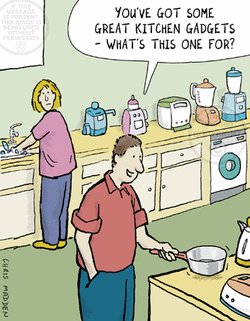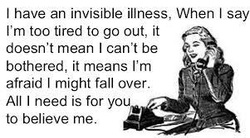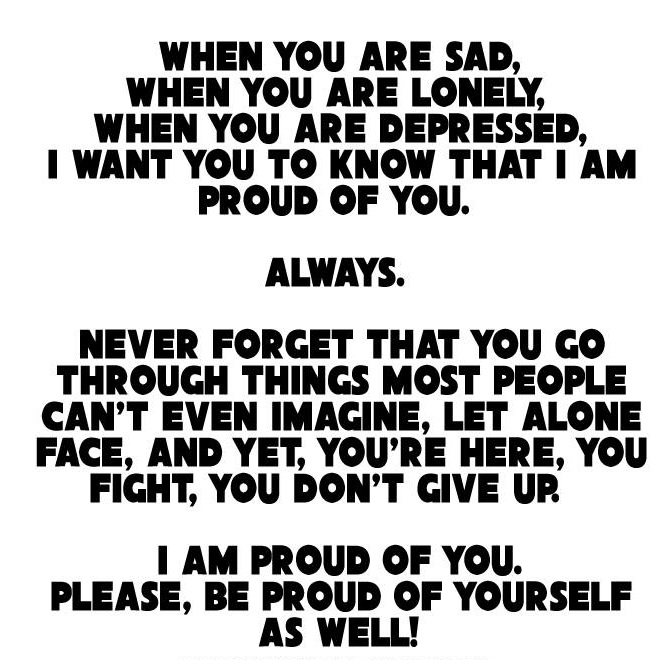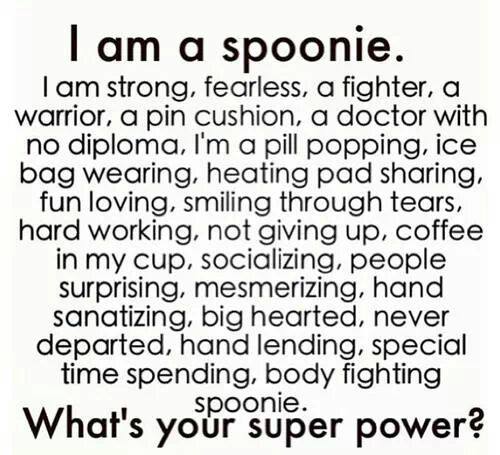
 This is me today. This is me on most days, actually, but my brain fog seems to be especially bad today. "Fog" is a good description for it; I feel like I'm wandering through a rain forest shrouded in thick fog when I'm attempting to figure out the word I want or what I'm doing on Saturday. The cognitive problems are actually the part of EDS I hate the most. I feel that if the disorder took over my body, it should very well leave my brain alone? Apparently not the case, however. So I am left chugging along, slowly, through the fog.
0 Comments
Management of pain and fatigue in the joint hypermobility syndrome (a.k.a. Ehlers-Danlos syndrome, hypermobility type): principles and proposal for a multidisciplinary approach.
Abstract: Joint hypermobility syndrome (JHS), or Ehlers-Danlos syndrome (EDS) hypermobility type (EDS-HT), is a underdiagnosed heritable connective tissue disorder characterized by generalized joint hypermobility and a wide range of visceral, pelvic, neurologic, and cognitive dysfunctions. Deterioration of quality of life is mainly associated with pain and fatigue. Except for the recognized effectiveness of physiotherapy for some musculoskeletal features, there are no standardized guidelines for the assessment and treatment of pain and fatigue. In this work, a practical classification of pain presentations and factors contributing in generating painful sensations in JHS/EDS-HT is proposed. Pain can be topographically classified in articular limb (acute/subacute and chronic), muscular limb (myofascial and fibromyalgia), neuropathic limb, back/neck, abdominal and pelvic pain, and headache. For selected forms of pain, specific predisposing characteristics are outlined. Fatigue appears as the result of multiple factors, including muscle weakness, respiratory insufficiency, unrefreshing sleep, dysautonomia, intestinal malabsorption, reactive depression/anxiety, and excessive use of analgesics. A set of lifestyle recommendations to instruct patients as well as specific investigations aimed at characterizing pain and fatigue are identified. Available treatment options are discussed in the set of a structured multidisciplinary approach based on reliable outcome tools. Full article here.  I love to cook. I have been cooking for my family and my friends since I was about 12. Of course, my dishes have gotten vastly more complex since the days where my parents were still a little nervous that I would burn the house down. (As a side note: I have come close to doing so recently with my memory lapses. My husband now double checks that the burners are off. This is always a good suggestion if you suffer from brain fog.) However, though I want to make fun, yummy, and allergy-free meals, the EDS pain can interfere with my plans. Over the past few years, I have come across some kitchen implements that I have found make working in the kitchen much, much easier, whether for executing a complicated recipe or for making a quick, no-fuss dinner. In no particular order:
Do you have any suggestions for this list? If so, please add them in the comment Not familiar with the spoon theory? Read about it here.
Use of the Gait Profile Score for the evaluation of patients with joint hypermobility syndrome/Ehlers-Danlos syndrome hypermobility type.
Abstract: Gait analysis (GA) is widely used for clinical evaluations in various pathological states, both in children and in adults, such as in patients with joint hypermobility syndrome/Ehlers-Danlos syndrome hypermobility type (JHS/EDS-HT). Otherwise, GA produces a large volume of data and there is the clinical need to provide also a quantitative measure of the patient's overall gait. Starting from this aim some global indexes were proposed by literature as a summary measure of the patient's gait, such as the Gait Profile Score (GPS). While validity of the GPS was demonstrated for the evaluation of the functional limitation of children with Cerebral Palsy, no studies have been conducted in patients JHS/EDS-HT. The aim of our study was therefore to investigate the effectiveness of the GPS in the quantification of functional limitation of patients with JHS/EDS-HT. Twenty-one adult (age: 36.1±12.7 years) individuals with JHS/EDS-HT were evaluated using GA and from GA data the GPS was computed. The results evidenced that the GPS value of patients was 8.9±2.6, statistically different from 4.6±0.9 displayed by the control group. In particular, all values of Gait Variable Scores (GVS) which compose the GPS were higher if compared to controls, with the exception of Pelvic Tilt and Foot Progression. The correlations between GPS/GVS and Lower Extremity Functional Scale (LEFS) showed significant relationship between GPS and the item 11 ("Walking 2 blocks") (ρ=-0.56; p<0.05) and 12 ("Walking a mile") of LEFS (ρ=-0.76; p<0.05). Our results showed that GPS and GVS seem to be appropriate outcome measures for the evaluation of the functional limitation during gait of patients with JHS/EDS-HT. PubMed info here.  I hate cancelling plans. I absolutely despise having to make the call (or send an email) in order to let someone down. It makes me feel like a huge disappointment of a person. My other choice is to simply not make plans at all, but then I begin to feel like a hermit. If I have something on my schedule, that means I'm not turning into a recluse, right?
I find myself in the cancelling conundrum all too often. My close friends and family know of my condition, although some do not know of the extent of my disability. How to tell them why I need to cancel without scaring them? Or making them feel like they need to visit and take care of me? Being honest is important, but sometimes I don't want to reveal all of my personal information (TMI much?). I also don't want to trivialize what is happening. I feel like I'm am constantly doing a delicate balancing act to keep people informed, yet protected. And that state of being is lonely. My balancing act applies not only with the making and breaking of plans; I do this for all aspects of sharing my life with EDS. I will always tell people enough so that our relationship can function; however, I keep much of what I'm going through to myself. Even my husband does not know 100%--I will always withhold some information. I do this in order to protect him and his mental state (he really doesn't need to know how many times things dislocated today) and to keep my independence (if he did know everything, he would be afraid to let me do anything). This balancing act probably sounds insane to the majority of people. But, I expect for those with chronic illness, it will sound familiar. I would love to hear your thoughts in the comments. Belgium doctors researching ACL tears found a previously unknown ligament, the anterolateral ligament (ALL), in human knees. Article here.
 I know there are people out there whose sleep is described as being so deep "the house could fall down, and s/he wouldn't wake up." I am not one of those people. Every little noise can, and will, wake me. Of course, once I'm awake, I will realize I'm uncomfortable and spend the next 20 minutes trying find a new sleeping position that won't hurt or threaten to dislocate anything.
I've found that white noise will prevent at least one source of awakening. When I'm at home, I usually rely on my trusty desktop (here, nightstand) fan. However, whenever I have to be away from home, I make sure to have my iPad just for a white noise app. My favorite by far (and free!) is Relax M. HD. It is available for Apple products and for Android. There is an upgraded version of this app as well, but I've been happy with the free basic version. The reason I prefer this app is that it gives you a number of "base" white noises, which are fine on their own, or you can combine each "base" noise with another to create a more complex and rhythmic white noise. A free product that will help me to get a better night's sleep? Definitely EDSer recommended! Pregnancy and delivery in ehlers-danlos syndrome (hypermobility type): review of the literature.
Abstract Ehlers-Danlos syndrome (EDS) is a group of connective tissue disorders which are divided into various distinguishable phenotypes. The type of EDS determines the potential obstetric complications. Due to the spectrum of clinical manifestation and overlap between phenotypes, there are no standardised obstetric management guidelines. Existing literature illustrates different obstetric management in hypermobility type of EDS, including uneventful term vaginal deliveries as well as preterm cesarean section deliveries. This paper discusses obstetric management of a woman with EDShypermobility type. Cesarean section was deemed the most appropriate delivery method in this patient due to the possible complications including risk of joint dislocation and pain morbidity. No obstetric complications were experienced, and good maternal and neonatal outcomes were achieved. Full text here. |


 RSS Feed
RSS Feed